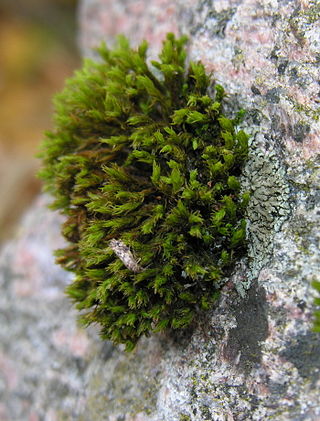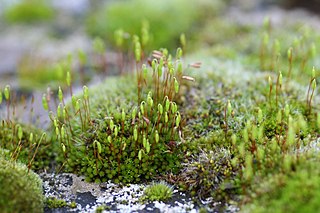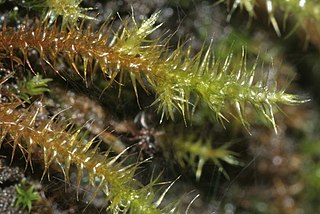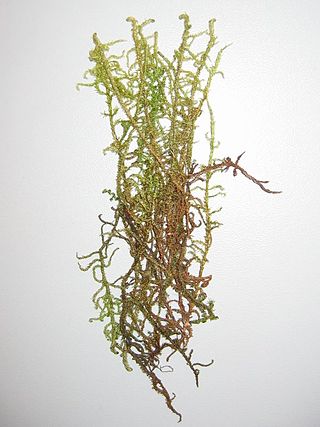
Orthotrichum is a genus of moss in the family Orthotrichaceae. It is distributed throughout the world.

Bryales is an order of mosses.
Xylolaemus sakhnovi is an extinct species of cylindrical bark beetle in the family Zopheridae. The species is solely known from the Middle Eocene Baltic amber deposits in the Baltic Sea region of Europe. The genus Xylolaemus contains a total of six extant species distributed from western Europe through the Canary Islands and North Africa to India. The species is the first in the genus to be described from a fossil specimen.

Amblystegiaceae is a family of mosses. It includes 20 to 30 genera with a total of up to 150 species. They occur nearly worldwide, growing in tropical, temperate, and subpolar regions.
Electropodagrion is an extinct species of damselfly in the family Megapodagrionidae known from a fossil found in Europe. The genus contains a single described species, Electropodagrion szwedoi.

Hamatocaulis is a genus of mosses belonging to the family Amblystegiaceae.
Pseudocalliergon is a genus of mosses belonging to the family Amblystegiaceae.

Rhynchostegium is a genus of pleurocarpous mosses belonging to the family Brachytheciaceae. The genus has a cosmopolitan distribution across different climatological regions except the polar regions, mostly in tropic to north temperate regions. The genus contains both aquatic and terrestrial species. The genus was named for their rostrate opercula. The type species of this genus is Rhynchostegium confertum (Dicks.) Schimp.
Campylium is a genus of mosses belonging to the family Amblystegiaceae.

Homalothecium is a genus of mosses belonging to the family Brachytheciaceae.
Scorpidium is a genus of mosses belonging to the family Amblystegiaceae.
Straminergon is a genus of mosses belonging to the family Amblystegiaceae.
Pseudoamblystegium is a genus of mosses belonging to the family Amblystegiaceae.
Sarmentypnum is a genus of mosses belonging to the family Calliergonaceae.
Platydictya is a genus of mosses belonging to the family Amblystegiaceae.

Drepanocladus is a genus of mosses belonging to the family Amblystegiaceae. It has a cosmopolitan distribution
Odontoschisma is a genus of liverworts belonging to the family Cephaloziaceae.

Scleropodium is a genus of mosses belonging to the family Brachytheciaceae. The genus has an almost cosmopolitan distribution.
Isopterygiopsis is a genus of mosses belonging to the family Plagiotheciaceae.

Sciurohypnum, or Sciuro-hypnum, is a genus of mosses belonging to the family Brachytheciaceae.







